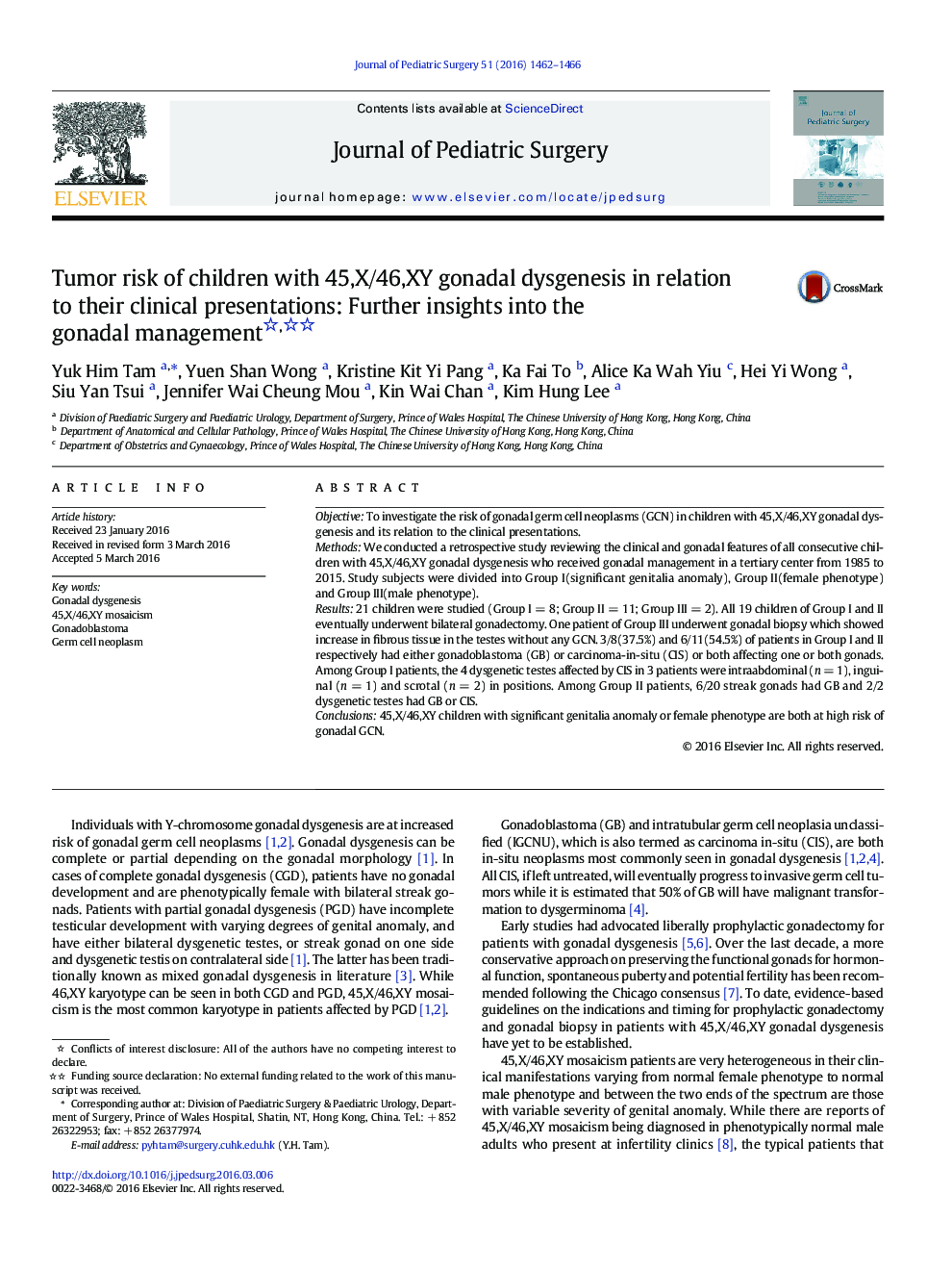| Article ID | Journal | Published Year | Pages | File Type |
|---|---|---|---|---|
| 4154710 | Journal of Pediatric Surgery | 2016 | 5 Pages |
ObjectiveTo investigate the risk of gonadal germ cell neoplasms (GCN) in children with 45,X/46,XY gonadal dysgenesis and its relation to the clinical presentations.MethodsWe conducted a retrospective study reviewing the clinical and gonadal features of all consecutive children with 45,X/46,XY gonadal dysgenesis who received gonadal management in a tertiary center from 1985 to 2015. Study subjects were divided into Group I(significant genitalia anomaly), Group II(female phenotype) and Group III(male phenotype).Results21 children were studied (Group I = 8; Group II = 11; Group III = 2). All 19 children of Group I and II eventually underwent bilateral gonadectomy. One patient of Group III underwent gonadal biopsy which showed increase in fibrous tissue in the testes without any GCN. 3/8(37.5%) and 6/11(54.5%) of patients in Group I and II respectively had either gonadoblastoma (GB) or carcinoma-in-situ (CIS) or both affecting one or both gonads. Among Group I patients, the 4 dysgenetic testes affected by CIS in 3 patients were intraabdominal (n = 1), inguinal (n = 1) and scrotal (n = 2) in positions. Among Group II patients, 6/20 streak gonads had GB and 2/2 dysgenetic testes had GB or CIS.Conclusions45,X/46,XY children with significant genitalia anomaly or female phenotype are both at high risk of gonadal GCN.
